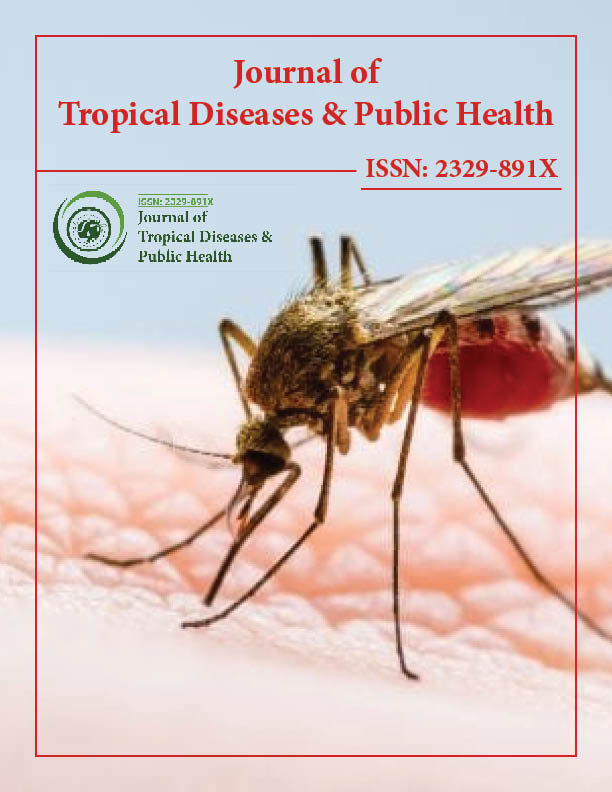Indexed In
- Open J Gate
- Academic Keys
- ResearchBible
- China National Knowledge Infrastructure (CNKI)
- Centre for Agriculture and Biosciences International (CABI)
- RefSeek
- Hamdard University
- EBSCO A-Z
- OCLC- WorldCat
- CABI full text
- Publons
- Geneva Foundation for Medical Education and Research
- Google Scholar
Useful Links
Share This Page
Journal Flyer

Open Access Journals
- Agri and Aquaculture
- Biochemistry
- Bioinformatics & Systems Biology
- Business & Management
- Chemistry
- Clinical Sciences
- Engineering
- Food & Nutrition
- General Science
- Genetics & Molecular Biology
- Immunology & Microbiology
- Medical Sciences
- Neuroscience & Psychology
- Nursing & Health Care
- Pharmaceutical Sciences
Commentary - (2024) Volume 12, Issue 4
Comparative Analysis of Tuberculosis and the Challenges and Innovations in Diagnosing Pulmonary Lymphangioleiomyomatosis
Takano Yuchen*Received: 25-Nov-2024, Manuscript No. JTD-24-27732; Editor assigned: 29-Nov-2024, Pre QC No. JTD-24-27732 (PQ); Reviewed: 13-Dec-2024, QC No. JTD-24-27732; Revised: 20-Dec-2024, Manuscript No. JTD-24-27732 (R); Published: 27-Dec-2024, DOI: 10.35241/2329-891X.24.12.454
Description
The Pulmonary Lymphangioleiomyomatosis (LAM) is a rare lung disease that predominantly affects women. When it comes to diagnosing pulmonary lymphangioleiomyomatosis, the challenges can be substantial. This condition often manifests through non-specific symptoms such as shortness of breath and chest pain, which can easily be mistaken for other respiratory diseases. The diagnosis of Drug-Resistant Tuberculosis (DR-TB) involves complex procedures including culture-based Drug Susceptibility Testing (DST) and molecular techniques. One of the significant challenges in diagnosing DR-TB is the timeconsuming nature of traditional DST methods, which can take several weeks to yield results. The delay can lead to prolonged transmission and worsening of the disease. Additionally, molecular techniques like gene pert and line probe assays have revolutionized the rapid detection of DR-TB, but they are not without limitations. These methods can sometimes produce false negatives, particularly in cases with low bacterial load. Furthermore, access to advanced diagnostic tools is limited in resource-poor settings, making timely and accurate diagnosis more difficult. Clinical research has shed light on various findings regarding DR-TB. For instance, studies have shown that early and accurate diagnosis significantly improves patient outcomes and reduces the spread of the disease. However, there is still a need for improved diagnostic tools that are faster, more accurate and accessible to all populations affected by DR-TB. In conclusion, addressing the challenges in diagnosing drugresistant tuberculosis is crucial for effective disease management and control. Pulmonary lymphangioleiomyomatosis, although a rare condition, serves as a reminder of the complexity and importance of accurate diagnosis in respiratory diseases. Advances in clinical research continue to enhance our understanding and approach towards better diagnostic practices.
Diagnosing drug-resistant TB, including pulmonary lymphangioleomyomatosis, is complex. One primary challenge is the similarity in symptoms between drug-resistant TB and other lung diseases. This overlap can lead to misdiagnosis or delayed diagnosis, adversely affecting treatment outcomes. Another significant challenge is the limited availability of advanced diagnostic tools in some regions. While molecular tests and culture-based methods are highly effective, they require specialized equipment and trained personnel. In many lowresource settings, these tools are not readily accessible, making accurate diagnosis difficult.
Advanced imaging techniques, including High-Resolution Computed Tomography (HRCT), can help differentiate between these diseases. HRCT scans of LAM patients typically show multiple thin-walled cysts scattered throughout the lungs, whereas TB often presents with cavitations and nodules. Moreover, the histopathological examination of lung tissue obtained through biopsy can provide definitive evidence. In LAM, the presence of abnormal smooth muscle-like cells known as LAM cells is a key diagnostic marker. Conversely, TB diagnosis relies on the identification of Mycobacterium tuberculosis in tissue samples through staining and culture methods. Early and accurate differentiation between LAM and TB is critical, as management and treatment strategies differ significantly. While TB requires prolonged antibiotic therapy, LAM management focuses on symptomatic relief and may include therapies such as motor inhibitors. In conclusion, pulmonary lymphangioleiomyomatosis presents diagnostic challenges in distinguishing it from TB, especially drug-resistant forms. A careful approach using a combination of imaging, histopathology and clinical correlation is necessary to ensure accurate diagnosis and appropriate treatment for affected patients.
Pulmonary lymphangioleomyomatosis patients often undergo molecular testing to detect specific genetic mutations. Similarly, molecular tests like Gene pert and line probe assays have revolutionized the detection of DR-TB. These tests identify mutations in the Mycobacterium tuberculosis genome that confer resistance to first-line drugs such as rifampicin and isoniazid.
Despite these advancements, challenges remain in the widespread implementation of innovative diagnostic techniques. High costs, need for technical expertise and limited availability in resource-constrained settings are significant barriers. Continued research and international collaboration are essential to overcoming these hurdles.
In conclusion, pulmonary lymphangioleomyomatosis and DRTB present unique diagnostic challenges that require innovative approaches. Molecular testing, whole genome sequencing, rapid culture methods and biomarker-based approaches are at the forefront of improving DR-TB diagnosis. On-going research and development are critical to making these advanced techniques accessible worldwide, ultimately leading to better patient outcomes.
Citation: Yuchen T (2024). Comparative Analysis of Tuberculosis and the Challenges and Innovations in Diagnosing Pulmonary Lymphangioleiomyomatosis. J Trop Dis. 12:454.
Copyright: © 2024 Yuchen T. This is an open-access article distributed under the terms of the Creative Commons Attribution License, which permits unrestricted use, distribution, and reproduction in any medium, provided the original author and source are credited.

